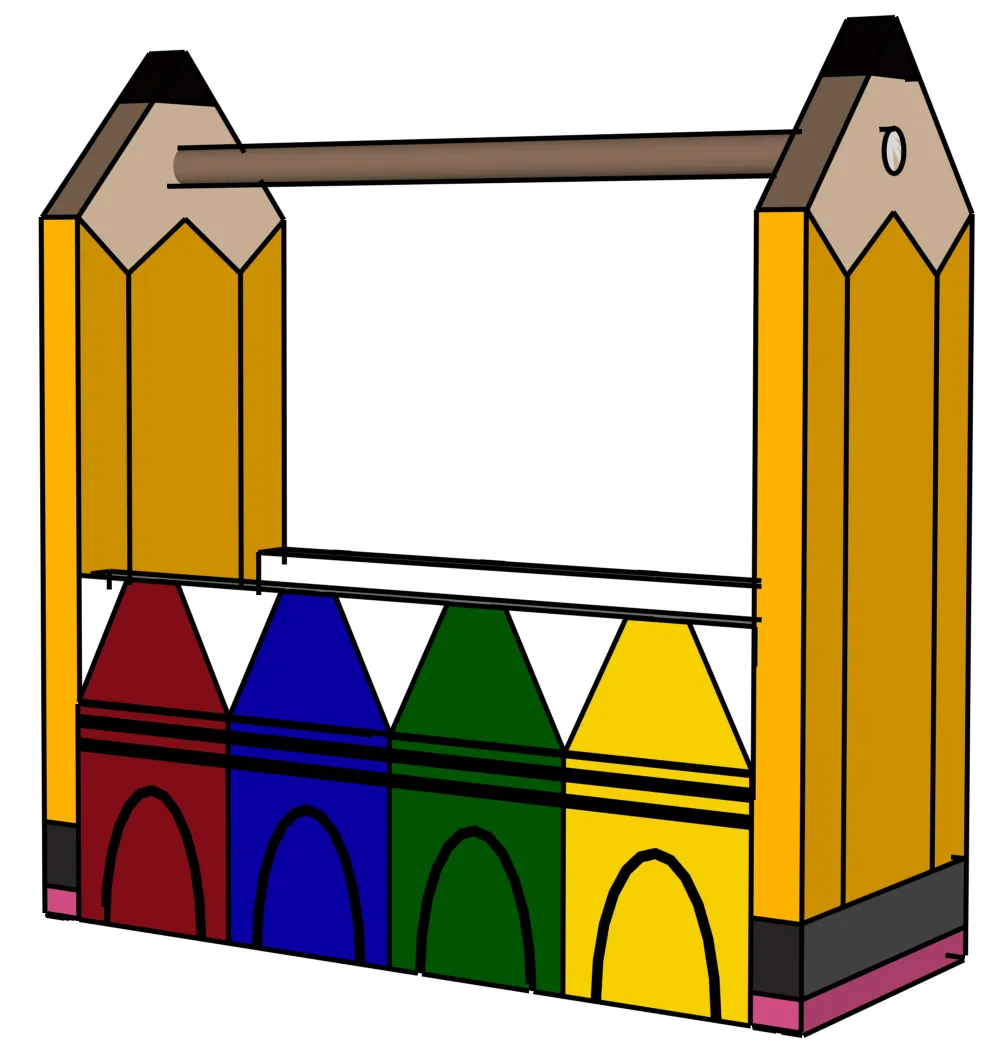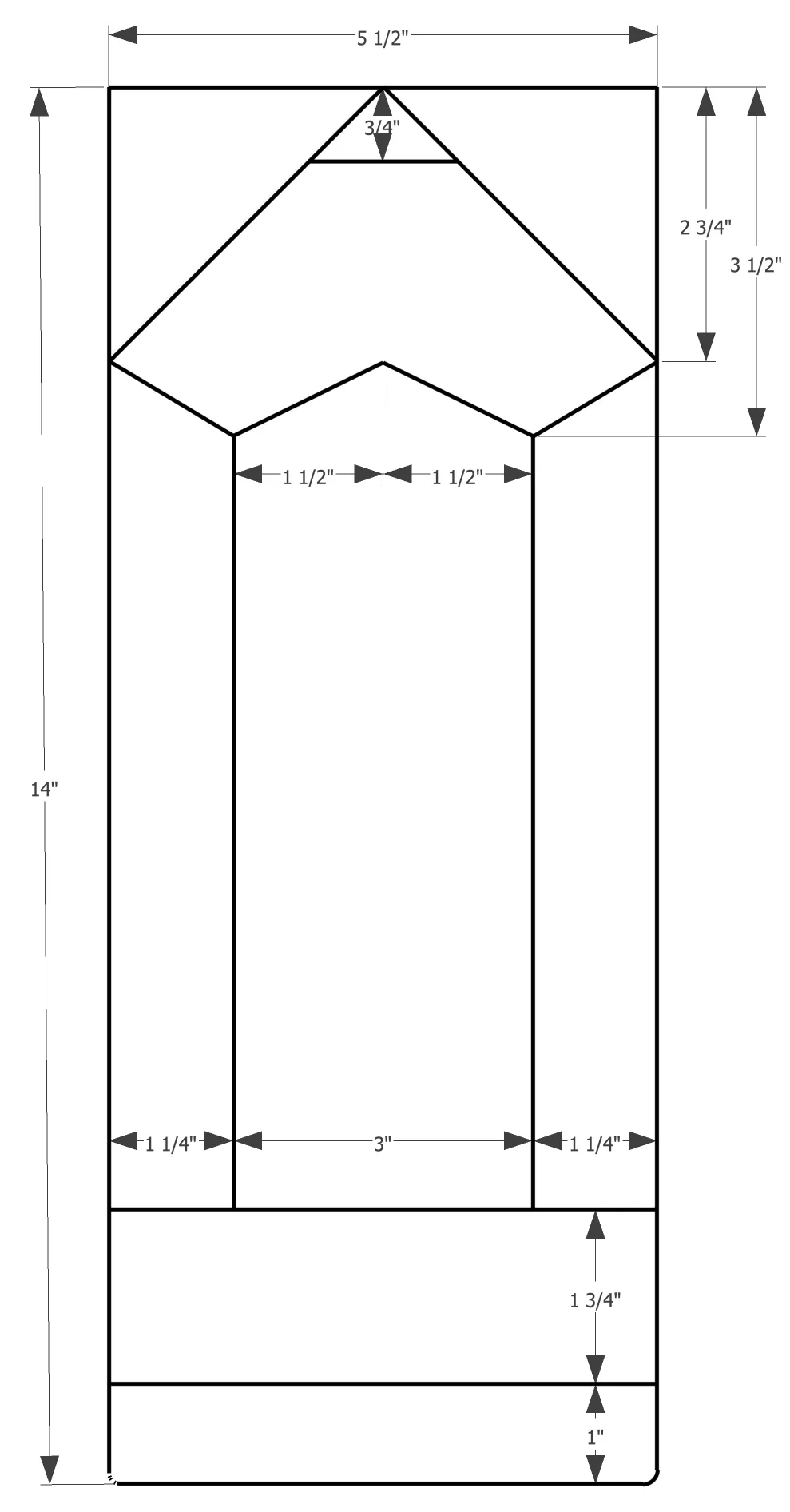Do school and art supplies take up too much space on top of your dining room or kitchen table? An art caddy is an excellent place to store your kids’ loose markers, crayons, pencils, and other supplies.
Steps for Building an Art Supply Organizer
You can build it using scrap wood and is easy enough for kids to get involved in, too.
1. Size the Pieces
Using a miter saw and the cut list provided, cut the 1×6 board and 1×4 boards to length. Mark the center point along the top edge of each 1×6 end. From the center point, clip the top corners of each board at a 45-degree miter to create the “point” of each pencil.
2. Drill an Inset to Hold the Handle
On the inside face of one end board, make a mark centered on the width of the board 3½-inches from its point.
Place a piece of painters tape on the paddle bit to mark a depth of 1/8-inch. On the mark, drill a 1/8-inch-deep inset to hold the dowel.
3. Mark the Inset on the Remaining Board
To mark the location of the inset on the remaining end, stack the board with the newly drilled inset facedown onto the opposing end board.
The point of the paddle bit should have driven though the board to create a small hole on the outside of the board. Drive a nail through the hole until it marks a point on the remaining end.
Remove the nail and top board, and then drill the 1/8-inch-deep inset into the remaining board.
4. (Optional) Paint the Parts before Assembly
While this tutorial covers the building process, this is a good time in the project to paint or stain all the pieces, or at least the parts that will face inward and be difficult to reach once the parts are assembled.

To create a design like ours, use the provided drawings as a guide or stencil.
5. Mount the Dividers on the Base
Make a mark on the long edges of the Base 3½-inches from each end. Set the two Dividers on edge. Apply glue, and then place the Base onto the Dividers, aligning them inside the marks. Using a nailer, drive 1¼-inch brad nails through the Base and into the Dividers.
6. Attach the Sides
Roll the assembled Base and Dividers onto its side. Apply glue to the top edges of each board. Position the first Side board onto the assembly, flush with the ends and bottom edge of the Base.
Nail through the Side and into the Dividers and Base. Flip the assembly and repeat to attach the remaining Side.
7. Add the First End Board
Flip the assembly on end. Apply glue the edges of the Base and Sides. Position the 1×6 end onto the assembly flush with the bottom edge and centered on the width to overhang each Side by ¼-inch.

8. Insert the Handle
Flip the assembly. Apply wood glue inside the inset. Position the handle into place.
9. Attach the Remaining End
Apply glue to the remaining end of each Side, Base, and to the hole drilled for the handle on the final end. Place the end onto the assembly, positioning the handle into the inset. Give the handle a half spin to spread the glue.

Stand the caddy upright and place a clamp across its width to set the handle in the glue. (Alternatively, you could also pre-drill a hole and drive a 1¼-inch screw through each Side and into the handle for more strength.)
10. Touchup the Paint
Finish by filling the fastener holes, lightly sanding the filler smooth, and then touching up the paint. Lastly, mark the design with pencil and then trace the design with a black permanent marker.
Cut List
- 1 x 6 Ends – 2 @ 5½”W x 14″H
- 1 x 6 Sides – 2 @ 5½”H x 12″W
- 1 x 4 Bottom – 1 @ 3½”W x 12″L
- 1 x Dividers – 2 @ 3½”W x 3½”H
- ¾” Dowel Handle – 1 @ 12½”
Materials
- 1×6 Board
- 1×4 Board
- ¾-inch Dowel (or similar)
- 1¼-inch Brad Nails
- 1¼-inch Wood Screw (optional)
- Wood Glue
- Wood Filler
- Painter’s Tape
- Paint or Wood Stain
Tools
 Miter saw
Miter saw Nail gun
Nail gun Drill/driver
Drill/driver Tape measure
Tape measure Paddle Bit sized to diameter of dowel
Paddle Bit sized to diameter of dowel Sanding sponge
Sanding sponge Ruler
Ruler Paintbrush
Paintbrush Permanent marker
Permanent marker









